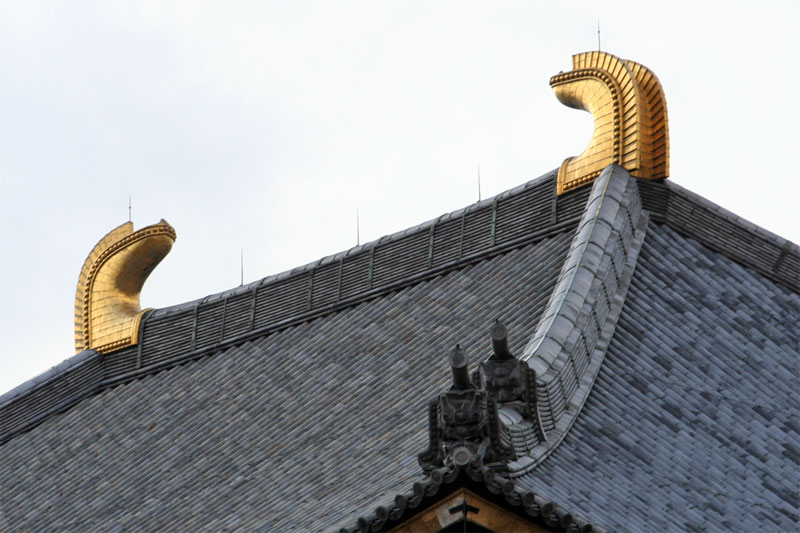| Also
written ιυφ, εoφ, ; also called tobi-no-o ιτΜφ, kutsugata B`
(shoes tile) because it is thought to resemble proto-modern shoes.
A type of roof ornament used on the main ridge *oomune
ε of temple and palace architecture. It resembles the tail of an animal,
but its origin is not known. It is believed to protect a building against
fire. It was widely used in China, and was popular in Japan in the Asuka
and Hakuhou periods. Shibi are traditionally made of tile
and the oldest surviving example in Japan is found on the west side of the *Kondou ΰ° at Toushoudaiji ΅η in Nara. It dates from the 8c. There is
an unusual use of shibi at Nankoubou μυV in Ehime prefecture,
where they were placed on corner ridges *sumikudarimune
χ~, and on the off-spring ridges *chigomune
t of the main hall *hondou
{°. The popularity of shibi waned by the end of the Kamakura period. Later shibi were made of a wooden frame covered with
a sheet of copper. A few stone shibi also exist. One variations includes
the fish-shaped *shachi
ιΝ. |



